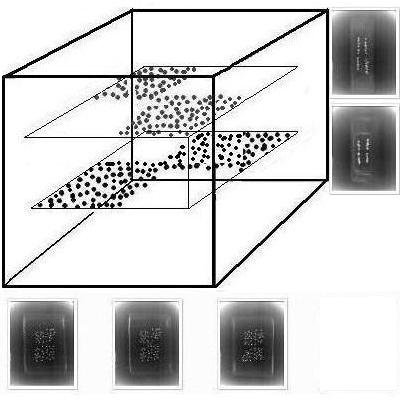In my research, I have found that the techique of lenticular panels for X-rays is known already from the 40's: "Moving in an arc, the X-ray tube scans the subject, which is placed above a fluorescent screen. Below the screen, the camera moves, recording the panoramic series of views on special film embossed with microscopic ridges." [Tridimensional X-Ray on One Film, Popular Science, Vol. 141, No. 3, September 1942].
Several patents have been made, for example in the patent
US3783282 (1974) we read "a plurality of lineated images are obtained on the underlying X-ray film, which images can be viewed to present an illusion of depth or a three-dimensional effect through the use of a conventional lenticular optical screen"
and the patent
US3962579 (1975) concerns an "Apparatus and a method for making an X-ray photograph of an object wherein the photograph, when viewed through a lenticular screen or other similar device, will provide a three-dimensional picture of the object and the interior parts thereof".
|
The lenticular panel is a multi-lens. It looks like
a sheet of transparent plastic, one side smooth and
in contact with an image properly prepared, and on
the other thumb, with lots of hills thickly riding
parallel, creating the multi-lens. They are often
used for the covers of notebooks and diaries, for
various figures, and advertising images. The hills,
deforming the optical path by refraction, make the
right eye and left eye of an observer see different
portions of the image behind it, namely, that the
two eyes see two different images, which were
prepared to create in the observer's brain the
stereoscopic effect, which is based precisely on
the fact that the two eyes see the reality differently,
because from slightly different angles. Accepting a pair of photographs of a scene
from taken from physical reality, photographed from
points that are distantd more or less as two pupils,
the company
Start 3D
produces a lenticular panel
that allows three-dimensional visualization of the
original scene. I applied this technique to X-rays.
I sent two radiographic images of an object x-rayed
from various angles, and I bought the lenticular
panels which actually exhibit some tridimensionality.
Most likely this technique does not produce fictitious information but I cannot grant that absolutely.
It could be useful, especially to understand
the relative positions of different elements.
|
